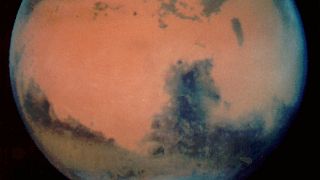Roman Empire
A new open digital data set and map of the Roman Empire shows that it contained some 300,000 kilometres of road.
It’s no secret that the Romans liked to build roads. But European researchers say they've discovered an extra 100,000 kilometres that had been hidden over time, covered by new construction or fallen into disuse.
Using the oldest satellite surveys, topographical maps and software, they have revealed that the Empire was the size of the European Union, with nearly 300,000 kilometres of roads - or enough to stretch around the world more than seven times.
The researchers says the network of Roman roads gives us an understanding of how the empire shaped several continents.
The study, just published in journal Scientific Data, says the Romans operated an integrated transport system on a continental scale.
Gaining and maintaining power
At the height of the Roman Empire in the 2nd century CE its population was a massive 55 million people.
The roads not only helped the Romans to continue their domination over distant lands, it allowed great quantities of trade to flow across the empire, especially the vast quantities of food needed to sustain the populations.
Lead author Tom Brughmans, an archaeologist and associate professor at Aarhus University in Denmark, says the movement not just of goods, but of people shaped the continent in a way which still affects us today.
Brughmans explains: "We have long distance trade, grain being produced in Egypt and being consumed in Rome, trade and transport over vast distances. We also have phenomena like Germanic tribes and their mass migration of Germanic peoples into the Western Roman Empire and contributing to its fall in the fifth century, and this was also the scene of early pandemics like the Antonine Plague in the second century. All of these phenomena had huge impacts on the rest of European civilisation and history. But they took place on the roads." The Roman Empire covered an area of four million square kilometres around 2,000 years ago. It would impact European history and beyond for the next millennia.
"Now, for the first time, having access to this spatially detailed open data set of Roman roads allows us to understand where did these phenomena flow through this massive region? What was the impact? What were areas that were particularly vulnerable? Particularly susceptible? And what is the overall development over very long time scales of these phenomena that have really shaped our history," says Brughmans.
Insight into how the Romans lived
He hopes scientists will find the study and his interactive map useful to understand more about the populations and how they existed at the time.
But he hopes it will also spark interest in anyone curious about the history of the Romans and the massive empire which dominated the continent.
Brughmans explains the Romans made such big gains by conquering cities which lay alongside the roads.
He says: "It conquered areas that were already densely urbanised with a vast net of existing roads. The Romans continue to use them. They upgraded them. An important contribution by the Romans is that they connected up all of those local road systems. So for the very first time, it was possible to move overland from Syria to Spain, for example, these vast distances. It was truly the first continental scale terrestrial transport infrastructure.”
Trade
According to Brughmans the network of roads boosted the wealth of the empire, but also allowed the careful regulation of goods and services needed for the expanding Romans themselves.
"What I find absolutely fascinating is that the capital of Rome had a population of about a million people, which was not equalled until London in the 19th century. Those people had to stay alive. They couldn't survive on just the agricultural surplus that was produced in central Italy. That needed to be provided from places that were very far away, that were able to produce lots of surplus in foodstuffs, grain from Egypt, olive oil from Spain, fish products from Carthage, North Africa.”
Brughmans hopes people will use the new interactive tool to discover more about how they connect to Rome.
He says: "It's kind of like a GPS, like a Google Maps of the ancient world. What I want people to do is explore it, see where their house is, see where the nearest Roman road is. But what we've also created is this route finding tool. How do I get from Cologne in Germany to Rome over the Alps on a donkey? That is how the Romans travelled. It took a very long time. What were the connections followed? What was the path? You can do that for the very first time now.”
The new high resolution digital dataset and map, called Itiner-e, covers roads throughout the Roman Empire around the year 150 CE.













02:13
Burkina Faso starts building first expressway in push to modernize
Go to video
Egypt unveils newly restored statues of Amenhotep III in Luxor
01:00
Rare fresco of Jesus as Good Shepherd discovered in Turkish tomb
02:19
Turkey: archaeologists uncover ancient Jesus fresco in tomb
01:15
Archaeologists stumble on rare statue of Egyptian god Pataikos
02:19
Lucy’s legacy: ancient hominin arrives in Prague the first in Europe